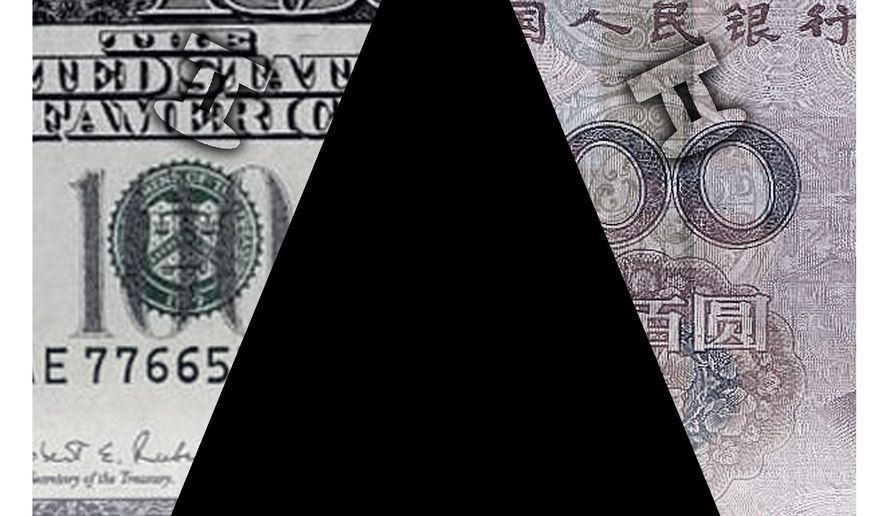By Peter Morici
 China has long prosecuted a trade war against American industries and workers. Finally, we have a president willing to take up arms but he is widely disparaged by academic economists — who are generally sympathetic to the resist Trump movement and prescribe more Obama-era appeasement. Supported, for example by New York Fed President William Dudley, they argue the economy is doing well and a trade war is not winnable — those are false and Beijing has left Washington little choice but to defend America or abandon our children’s future.
China has long prosecuted a trade war against American industries and workers. Finally, we have a president willing to take up arms but he is widely disparaged by academic economists — who are generally sympathetic to the resist Trump movement and prescribe more Obama-era appeasement. Supported, for example by New York Fed President William Dudley, they argue the economy is doing well and a trade war is not winnable — those are false and Beijing has left Washington little choice but to defend America or abandon our children’s future.
The 2.9 percent economic growth accomplished so far by President Trump compares poorly to the better than 6.5 percent China has posted in recent years. Beijing is using the dividends from unchallenged mercantilism to finance instruments of soft power — foreign aid and state directed overseas investment — and build an impressive navy to subvert U.S. security arrangements in the Pacific.
The U.S. trade deficit with China accounts for about 60 percent of our massive global trade deficit. Those impose a huge drag on the demand for U.S. goods and services and require a massive federal budget deficit to avoid permanent recession and Italian-style unemployment.
Those deficits must be financed by foreign borrowing. Even free trade economists acknowledge the accumulated foreign debt will soon breach levels that instigated financial meltdowns in countries like Spain and Greece.
China has targeted a succession of U.S. industries — for example, aluminum, industrial machinery and solar panels — with massive subsidies, high tariffs and administrative barriers to competitive imports and forced joint ventures to gain market access that give away U.S. technology to fledging Chinese competitors.
Now Beijing is going in for the kill — targeting America’s internet giants, artificial intelligence and advanced microprocessors.
Mr. Trump has threatened tariffs on $50 billion to $150 billion of imports across a broad range of industrial machinery and household products to compensate for lost intellectual property exports. China promises retaliation but appears to be offering to phase out joint venture requirements in the auto sector and speed reforms in insurance and other financial services.
The process is degrading down to just another chapter in a long history of U.S.-Chinese bilateral negotiations, which likely will end with a list of promised reforms that may never materialize and won’t resolve broader systemic problems bedeviling bilateral commerce.
U.S. auto companies will face considerable difficulties extricating themselves from established joint ventures, and the Chinese likely have obtained what they need in that sector. They appear to be leading in the race to develop affordable electric vehicles and critical battery technology.
State guidance, support and preferences for domestic firms are deeply imbedded in the culture of China’s ruling oligarchy and any commitments made in a new trade deal could be circumvented with other policies.
For example, Qualcomm’s purchase of Dutch chipmaker NXP has been approved by antitrust regulators in the U.S., Europe and elsewhere but those companies have significant sales in China. Beijing’s regulator has put the deal on hold apparently pending the resolution of U.S.-Chinese trade tensions.
China aims to build a significant indigenous microprocessor industry and with joint ventures off the table, it could require intellectual property transfers through antitrust reviews — much the way European regulators target big American technology companies to pursue industrial policy objectives.
We can’t retreat into absolute protectionism — the supply chains of the two economies are too intertwined to start over — but we can acknowledge what experience has taught us.
The Chinese Communist Party is hell bent on maintaining control over the broad focus and priorities of private sector investment and establishing dominance in high tech — unless America makes it too costly.
Shortly after offering the above-mentioned concessions on autos, President Xi pledged massive new subsidies for Chinese technology companies — essentially thumbing his nose at Mr. Trump.
No promised reforms — honored or abandoned — can mitigate that malignancy and negotiations with Beijing have repeatedly proven a fool’s journey.
In 2017, China sent the United States $525 billion in goods and services but Americans only sold $187 billion there. We should impose a system of marketable import licenses that reduce the trade gap by $50 billion to 100 billion each year until it is eliminated.
It’s not pretty or something as an economist I would prescribe in a perfect world, but in a perfect world we won’t need armies.
• Peter Morici is an economist and business professor at the University of Maryland, and a national columnist.
Copyright © 2018 The Washington Times, LLC. Click here for reprint permission.
No comments:
Post a Comment